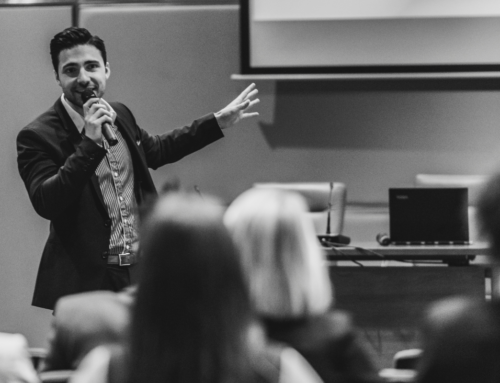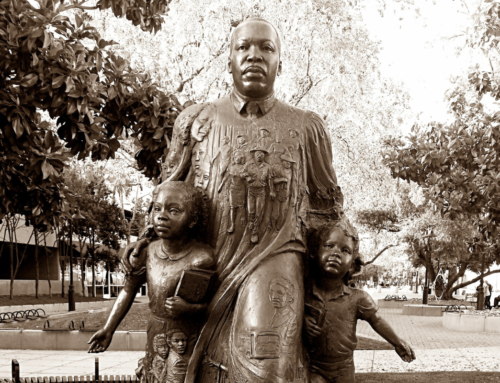This post is the fifth in a series on the basic building blocks of a great speech.
You’ve researched your audience, asked the right questions, and learned the particulars of the occasion. You’ve created the opening frame of the talk with an engaging story that hints at the glories to come. You’ve plunged the audience deep into the issue that animates your topic. You’ve bathed the audience in the keen light of your expertise or experience.
It’s time to wrap up. If you’ve planned to speak for 45 minutes of an hour time slot, you’ve got about 7 minutes to go. You’ve got two important steps left, and I’ll take them in order in this post and the next one.
Put yourself in the audience’s shoes (or seats) for a moment. You’ve taken them (the audience, not their shoes) on an intellectual and emotional journey, a journey of decision. Your goal is to persuade them of something – your point of view, your way of looking at the world, your approach to solving some big problem. To do that, you’ve dwelt on the issue for the first half of your speech, in order to prepare them mentally for change. Then, once fully primed, the audience embraces your particular solution.
At this point, the audience has absorbed a good deal – of emotion, of information, of persuasion. It’s time to make what you’re offering concrete, if you haven’t already. So now you want to take just a few minutes to give them a specific case study, or create a clear picture of what the future could look like, or list for them all the benefits of adopting your cure for world hunger.
You should be concrete, specific, and brief. Paint a picture in words of that happy ending that awaits your audience.
If you create a sufficiently alluring image for the audience of your way of doing things, you will give them something that feels real to latch onto. It’s like arriving at a new, wonderful home after a long journey. And it completes the story arc of your speech.
The step is a small one, and only lasts a few minutes, but it’s important for audiences because our ability to imagine a new place on our own is limited. We need the help of someone who has been there before. You, the speaker. Take us there.








That’s a great reminder. Casting a vision of implementing the call to action is an excellent way to finish the speech. “Can you imagine a day when, wouldn’t it be good if.” As you say it so important to add this step, even though it’s just a small one, because the people leave with hope which is always a good feeling to have. Thanks for this series, it’s been very interesting.
Peter — thanks for your comments and engagement. I’m glad you’re finding the series helpful!